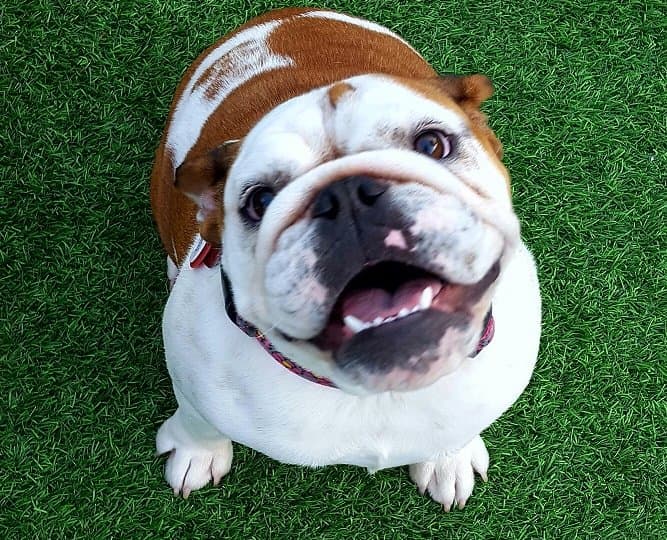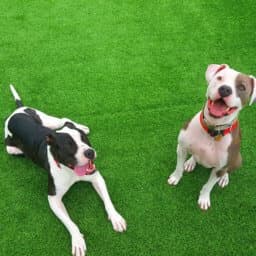
When we think about bloat, generally one thing comes to mind: the sensation we get after Thanksgiving dinner when we need to undo our belt a hole and we ask ourselves why we went for the third helping of stuffing. In all fairness, that isn’t the wrong situation under which to be using that term. At its core, bloat is simply, “any abdominal swelling.” Sometimes this happens alongside pain in the abdomen or tightness and sometimes it doesn’t. As a whole, bloat isn’t really life threatening – at least not the kind that we’re talking about in this instance. At worst, you might look a little bit rounder than usual in family photos.When it comes to dogs however, the word bloat is used colloquially to describe a life threatening condition for which surgery is effectively the only option. In its true form, this condition is known as GDV; gastric dilation volvulus. Other names for it may be stomach twisting or gastric torsion. Bloat is only the condition in which the stomach contains excess gas – this is not a crisis, however gastric torsion may well be. No matter what you call it, GDV is a terrifying diagnosis for any dog owner.
To understand what happens with GDV, you need to understand a few pieces of basic anatomy, specifically as they relate to the stomach. The stomach is the major organ of chemical digestion in all species, including the dog. This digestion is done by a number of enzymes, including HCl (Hydrochloric Acid), which – as you may surmise – is not something that you want moving up into the esophagus or down into the intestines. To prevent this from happening, the stomach contains two sphincters; the pyloric and cardiac – the former being named due to its proximity to the part of the stomach known as the pylorus. GDV occurs when the pyloric sphincter malfunctions, preventing anything from passing through, establishing a blockage. The lack of movement from stomach to intestine is key in what causes GDV to become an emergency situation.
As the dog continues to eat, breathe and drink per normal, there is nowhere for anything in the stomach to go. This causes it to become distended, moving in the abdomen to accommodate the change in size. With enough movement, the entire stomach can rotate over itself, up to 360 degrees if it moves in the clockwise direction! When this happens, normal internal anatomy is altered and the results show themselves in many different ways, affecting body systems across the board.
If the rotation of the stomach is over 180 degrees, this will close off the esophagus and result in an animal that may try to clear the blockage by retching, but will be entirely unsuccessful. The rotation prevents the cardiac sphincter from allowing the stomach contents to move back up, which is further hindered by the twist in the esophagus. Due to the trachea’s proximity to the esophagus, this may result in a dog that struggles to breathe, though this is not necessarily present in all cases of GDV.
Distorted internal anatomy is the real killer here though. The stomach’s modified location results in a reduced return of blood to the heart, as it interferes with the normal flow back along the Vena Cava – the body’s main highway back to the heart. This results in a big drop in blood pressure, which is the major of cause of the worst symptoms, including going into shock. The major vein to the liver is also compressed, resulting in a compromised liver that can’t do its job and struggles to remove toxins from the blood stream. If not treated promptly, dogs with GDV will pass away due to toxic shock or blood poisoning.
So, you suspect your dog has GDV … now what? Well, get your four legged friend in the car and head to your nearest emergency clinic, NOW! This is not something you can treat at home, so be prepared for surgical intervention. Once you get to the vet and they confirm with an x-ray, they’ll need to stabilize. This generally involves a catheter and fluids, which help to increase blood pressure to a normal value, long enough for them to intervene. The gas in the stomach needs to be relieved, either by inserting a tube down their throat, or by using a special tool to create a small hole in the stomach to relieve the pressure. Once that’s relieved, it’s up to the vet to go ahead and rotate the stomach back into place and check for damage. If caught early, the tissue is very likely to return back to normal. If not … well, the time without adequate blood flow can lead to tissue damage (necrosis), requiring it to be removed during surgery. There’s always the possibility as well that during twisting, the spleen (an organ closely attached to the stomach) may have been damaged. Since it acts as a massive store of blood cells, this is never good. If damaged beyond repair, your vet may need to remove it (called a splenectomy) to prevent further issues.
Now the damage control is done and it’s time to try and prevent this from happening again. The typical means of doing so is known as a gastropexy; a method of tying the stomach to the right side of the body wall, to prevent the twisting again. While it’s still possible for twisting to happen, it’s significantly less severe and far less likely to occur again, than in dogs without the procedure. Once they’re out of surgery, then it’s simply a waiting game. The prognosis is highly dependent on how quickly GDV was identified, what degree of surgery was required and how much supportive therapy was given before and during surgery. The good news is that with a quick response and ideal situation, the mortality rate for such a case is below 10%!
After all of this, it’s still hard to tell what really causes GDV. Certain breeds have a much higher predisposition; those with larger chests have a larger area in which the stomach can twist – Great Danes, Weimeraners, Standard Poodles, Irish Setters, Gordon Setters and St. Bernards are at the top of this list. Other factors are dogs that drink too much water too quickly (resulting in excessive air in the stomach), age, stress and dogs that eat kibble that expands in the stomach.
The best thing you can do for your dog (especially if they belong to the breeds listed above) is to educate yourself on the signs of bloat and to take it seriously. If your dog has a history of bloating, always let boarding staff know, so they can keep an eye on them! Catching GDV early is the best way to ensure your dog comes out of this on the up and up.
If you have questions about our dog boarding services, call our facility near San Ramon, CA at (855) 364-3293 or (855) DOG-DAZE.





